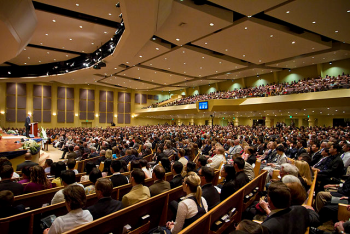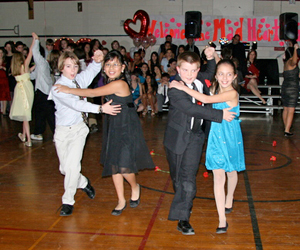
Housed in a rugged all-wood cabinet, the PRX815's lightweight yet powerful 1500-watt Class D amplifier employs JBL's acclaimed Differential Drive technology for efficient power handling. A redesigned input panel and universal power supply yield easy, reliable operation wherever you go. The JBL PRX815W has proven itself to be a solid, all-around performer for a number of events and applications!
Here's what people are saying about JBL PRX815 Powered Speakers:
"So far I'm very impressed! The build quality and sound is truly excellent!"
-Kevin
"These speakers are some of the best!"
-Damien
"I have used many different brand speakers before but we all know wen it come done to jbl you cant go wrong!"
-Julien

The Chauvet Hurricane 1800 Flex Fog Machine puts you in charge of the weather. The Hurricane 1800 Flex gives you powerful DMX control with adjustable 180-degrees angles. The unit rents with a wired timer remote. This water-based fogger also sports a low-fluid indicator and automatic shut down, so you can concentrate on your smokin' performance - and not your gear. The weather forecast for tomorrow night's show? Foggy and exciting, courtesy of the Chauvet Hurricane 1800!
Here's what people are saying about the Chauvet Hurricane 1800 Flex Fog Machine:
"This machine will put out a ton of fog in a couple of minutes. Runs very efficient as well. Seems to barely use any fog fluid on each use and can store more than a gallon in the tank."
-Daniel
"Amazing machine! It can fill a large room in a couple of minutes."
-Rolly

Based on the StudioLive™ AI-series engine and controlled with battle-ready UC Surface software for Mac®, Windows®, and iOS®, the StudioLive RM16AI and RM32AI 32x16x3 rack-mount Active Integration™ digital mixers are scalable, compact, and 100 percent recallable.
PreSonus’ new UC Surface control software was specifically designed to be an interface for live mixing but also serves well in a studio environment. The careful layout of the mixing features provides quick, intuitive access to everything you need in the heat of mixing.
This groundbreaking remote-control software runs on Mac and Windows computers, as well as iPad, so you only need to learn one piece of software regardless of platform. UC Surface supports iPad and Windows 8 touchscreens, taking full advantage of these intuitive multi-touch interface technologies.

From the Humble Beginnings as the Maker of Garage-Made Guitar Amplifiers to Today’s Leading Brand of Professional AV for Live Sound, Cinema and Corporate Installations Worldwide, QSC Moves Forward to the Future
Costa Mesa, CA (January 04, 2018) – 1968 was a year of seismic change across the globe. Fifty years ago, unrest was fueled by civil rights movements in the United States and protests and revolutions in Europe. Technological innovations included the introduction of the 747 jumbo jet and the first humans to orbit the moon, in Apollo 8. In music, as the Beatles sang ‘Hey Jude’ and the Rolling Stones rocked ‘Jumping Jack Flash’, the company known today as QSC was born as Quilter Sound Things in a small industrial building in Costa Mesa, California.
The original focus for QSC was hand-built guitar amplifiers; the company only later transforming and evolving to become a world-leading brand in power amplifiers. “Our early vision was to take over the world with high-powered, giant guitar amps, but we missed that boat and refocused our efforts on power amps,” said Pat Quilter, QSC Founder. “Since the beginning, QSC has always focused on staying close to our customers, which is the foundation for the company’s success.”

Hide that mic! The Shure Microflex MX153 professional electret condenser earset mic is so small, it's practically invisible. It may be tiny, but Shure has packed the MX153 with very sophisticated technology - such as CommShield, which guards against interference to give you spanking clean signals, free from cellular RF interference. The MX153 is fitted with a secure-locking TQG connector for use with Shure bodypacks. Whether you're involved in broadcasting, corporate lectures, teleconferencing, church audio, or live sound reinforcement, if you need exceptional sound quality and pro reliability, the Shure Microflex MX153 delivers the goods.
Here's what people are saying about Shure MX153 Microphones:
"Awesome. Super clear, consistent reception, easy to adjust. Best headset mic I've used. Highly recommended."
-James
"We've used these for our worship team, cannot believe how clear and powerful these are! So simple to operate, Lightweight and comfortable! Excellent!"
-Doug

Microphone placement for broadcast and theater present a unique set of challenges compared to miking a concert or studio recording session – not least because traditional placement for optimal sound quality is rarely possible. More often than not, the microphone is required to essentially disappear, as not to hinder the performer or distract from the overall production.
There are a few fundamentals to consider before securing a mic to a performer, because body-worn microphone placement is always a compromise. But our job is to ensure the mic always delivers the same response throughout a performance and on different nights of a production. In this article, I will cover the process I follow to mic performers for vocal reinforcement or recording.
Here are some of the initial questions I ask when setting up a show:
How do you speak into a microphone when you're given the opportunity to stand up and speak, and perhaps pitch a new business? Well, the one thing you shouldn't do is what I'm doing right now. If you're holding a microphone, you can't be gesturing with that hand. Because every time you do this you're taking it out of the range, and you just frustrate people. The sound goes in and out. That's a horrible thing to do.
Any time you're given a microphone, realize every microphone's a little bit different. You should always ask the person who gave it to you, whether it's a technician at a speaking event, or a conference, or if you're in a talk radio show, ask the producer. Ask them what is the best distance for you when you're speaking to the microphone. For a lot of microphones, it's about like this, the distance between your fingers when placed like that. But every microphone is a little bit different.
Now, there are certain microphones where they're more sensitive than others. When you say the letter P, it causes an explosion of air, and you get that popping sound. Pop, pop, pop, Peter Piper picked. The letter P, the consonant sound P, can be difficult for microphones. If you are up close or you're doing any sort of audio recording, be especially careful when you're saying the letter P.
Also, realize if somebody gives you a microphone, it's not for you. It's for the audience. I can't tell you how many times I've seen a speaker get up in front of 400 people, handed a microphone, and the speaker very arrogantly says, 'oh that's OK. I don't need a microphone.'
Well, we know you don't need a microphone. It's for the audience for them to hear you. That way, people all the way in the back can see it. Sometimes perhaps you might be captured on video and audio for a webcast for people to see it later.
So, always take the microphone when you have a chance, and try to speak in a conversational tone. You do that, and you'll be in good shape.

There’s no doubt the church is undergoing a massive cultural shift as people attend church less often, and even regular attenders show up less frequently than before.
As much as everything is changing and we need to respond to that, almost every church still holds weekend services and likely will for years to come. So, in the meantime, what can you do to help reach more people? What can you do to boost weekend church attendance? Before you think this is just a numbers game, realize it’s also a spiritual issue. To me, declining attendance is a spiritual issue because I believe that disconnected people rarely grow spiritually.
Connect people and they grow. Disconnect people, and they don’t. So, naturally, I’m motivated to connect people. Can we connect people outside Sunday? Absolutely. By all means connect people through groups, other gatherings, in local mission and so much more. And yet this truth remains: the weekend service is, functionally, a primary way most people connect with the church and connect with God. So to ignore Sundays is to ignore a reality that impacts hundreds of millions of people every week.
10 Changes You Can Make to Boost Weekend Attendance
So if you’re holding weekend services, what can you do to bump weekend attendance positively, knowing that it will help people connect better to God?
Here are 10 ideas that are relatively simple to implement:
Looking for an inexpensive and affordable way to provide a dramatic atmosphere at your home this Halloween? Spook your trick-or-treaters, party guests, or both! We provide a simple solution that allows you to add stunning visuals to your Halloween night! Make your house the scariest and best one in your neighborhood!
You can also add your own music, using the same equipment as a the professionals. Renting high-quality professional lighting, effects, and sound equipment is the best way to add a scary mood to your Halloween -- and it's completely user friendly! Be the best house on the block!
You've put time and effort into your décor this Halloween. Make sure you've achieved the frightening look you want and have a great sounding system to really add value to your event!
What We Provide for Halloween:
Professional Sound Systems:
Prices range from only $150. Each includes two speakers, a mixer/power amp, a microphone, and all the cables and stands needed. Click here for sound system packages.
Lighting:
Color changing LED lighting, lasers, and a variety of other effects. Click here to see!
Fog Machines:
Rent one of our easy to use Chauvet Fog Machines to really add to the atmosphere of your Halloween party.
Easy Instructions:
If you know how to run music from your phone or laptop, then you already know most of what you have to do. The ability to turn the volume up is the second most complicated thing -- but it's no different than the one on your car radio.
Optional Delivery and Setup:
For a small additional fee, we will deliver, set up, and pick up the equipment at the end of the night or the following day!

First things first: Getting your music on Spotify is easy.
If you have a label or aggregator, they'll get your music on Spotify for you. If you don't, Spotify has deals in place with a number of companies who can deliver your music to them and collect royalties for you.
These services handle the licensing and distribution of your music and also pay you royalties when your fans stream your music on Spotify. There's usually a small fee or percentage cut involved. Each service is unique, so be sure to do a little homework before picking one!

The internet has opened up endless possibilities to promote your music, and, while that may seem daunting, it really allows you to experiment and let your creativity run wild! The key is to learn from the promotions you run, make changes, and fine-tune them to your unique career. Let’s take a look at some basic strategies you could be using to promote your music right now:
1. Live Music Promotion
With everything moving more and more towards digital, it’s easy to forget about the value of the person-to-person interaction. These days, you can create great quality music, release it, distribute it, promote it, and even play live without ever leaving your room. But, just because you can release something entirely online doesn’t mean you should! In fact, these personal interactions are still extremely important in the music industry.
The live show is so much more than just performing. You can use gigs to promote your music, new album, or song. Tell your fans that you’ll be premiering a new song, or, if you want to go all out, tell them you’ll be playing the whole album at one show over the next month or two. The trick is not to tell anyone which is the lucky show.
If your fans really want to hear the album early, they’ll have to come to all the shows. You could also use gigs to grow a fanbase in new cities, states, or countries. Work with a local established band and propose a headline swap – you’ll open for them in their home town and they’ll open for you in your home town. Just make sure you pick a band with a similar musical style.

The Middle School dance is a tradition, almost a rite of passage. But let’s face it… Middle School Kids can be challenging on a good day. Trying to entertain them and keep them happy is difficult at best. Getting them excited about a school event is sometimes near impossible.
Here are some themes that will spark some enthusiasm in the kids. Choose one of these teen dance themes or come up with your own. Then follow these simple tips with any theme you choose to get kids excited to attend:
Below you will find several popular themes for middle school dances. Or for those who want more of an “out of the box” solution, our theme designers have created some new middle school dance themes especially for this age group!

When we started planning our wedding, one of the first decisions my husband and I made was to handle the music ourselves via our trusty iPods. Music is integral to both of our identities, something we’ve always shared—we were writing, exchanging mixes, and going to concerts together long before we realized we were something more than friends—and we wanted to extend that to our wedding. The key word that we both seized on when describing the music for this important night was “personal”; the unspoken expectation was that the right combination of the right songs, through some kind of alchemy of sentiment and aesthetic, would converge into a perfect expression of ourselves and our relationship, infusing each moment with meaning, like the best movie soundtrack of all time.
We assumed that the playlist project would be one of “the fun parts” of wedding planning, something we could do to relax in between all the horrible, stressful bits we’d been told to expect. As it turned out, our strong feelings about music made the whole process surprisingly fraught—in fact, the playlist was the only aspect of wedding planning that actually ended up causing stress and friction for us. As much as we thought it should all have come together easily, magically, we kept finding ourselves baffled by each other’s choices and increasingly defensive about our own.
What helped, finally, was sitting down and actually talking through what we were trying to accomplish. We realized that we had been approaching this project with two very different definitions of what “personal” meant to us: I was racking my brains for songs with lyrics that best represented my hopes for how our wedding and our marriage would feel, while he was focused on songs he associated with memories of moments in our history. With this context, we were able to understand each other’s choices and agree on a few strategies that would work for us both.

While planning your wedding, the question of who is responsible for covering what costs will surely be one of the first to cross your mind. Depending on your family's own traditional backgrounds and etiquette, locations and items that you may already have at your disposal, and simply the changing of the times, there really is no completely "correct" answer or outline as to who is expected to pay for what items, costs, and other services. In this article, you will find some basic guidelines and simple references to keep in mind that have been common throughout the years, although nothing is set in stone when it comes to funding your wedding.
It is also important to remember that the cost of a wedding has grown substantially in more recent years. With couples marrying later, many times after having successful careers of their own, it's become more common for the bride and groom themselves to contribute heavily (if not completely) to the cost of their wedding. The parents of the groom are also much more commonly involved nowadays in the finances of the wedding. A modern popular opinion is to have the couple themselves, along with each of their families to each contribute one-third.
Here is a basic layout to begin planning the financial costs of your wedding:
Page 6 of 23